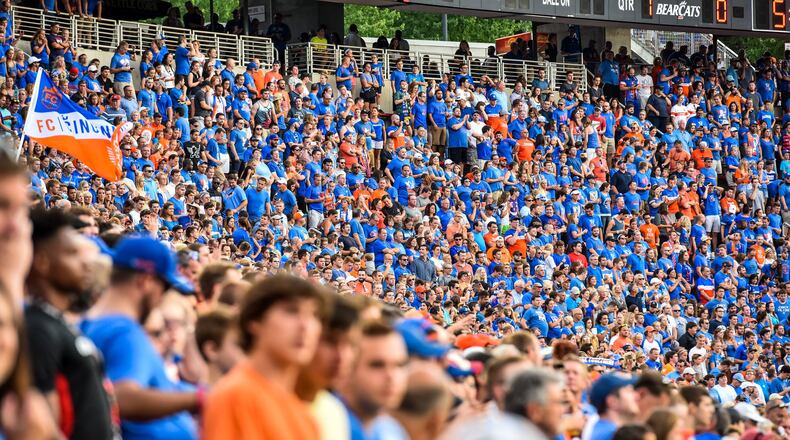The league's 25th and 26th teams are expected to be announced in the days following a Dec. 14 board meeting with plans for them to join in 2020. Two more expansion spots remain after this round and will be determined at a later time, as the league plans to grow to 28 teams.
»RELATED: FC Cincinnati will finance own stadium
Here are five things we know about FC Cincinnati’s bid as club executives prepare to meet with MLS in New York City:
1. Ownership group is a plus
FCC’s ownership group is one MLS would be glad to have, led by Carl Lindner III, the billionaire American Financial Group co-CEO whose family is among the richest in America. Eight other investors also joined Lindner in his FC Cincinnati venture, including George Joseph of Joseph Automotive Group, Jack Wyant of Blue Chip Venture Co. and Scott Farmer of Mason’s Cintas Corp.
»RELATED: FC Cincinnati, Liberty Center announce partnership
2. Market stronger than it seems
The city ranks last among the 12 expansion cities for television market, checking in at 36th overall, but the club already has established a proven audience.
This past season FCC averaged about 22,000 fans in the second-division United Soccer League, which averages less than 4,000 as a whole, and club president and general manager Jeff Berding told 700 WLW that 15,000 season tickets have been secured for 2018. Three MLS teams this season averaged less than 16,000 fans a game.
FC Cincinnati reached a deal to have all of its games broadcast this past season and the club also attracts fans from Dayton.
3. Sponsorship opportunities are plentiful
Cincinnati is home to nine Fortune 500 companies, which is more per capita than New York City and Los Angeles and provides for plenty of sponsorship opportunities. Forbes ranked it No. 15 on its 2016 list of top cities for young professionals, so it is a “city on the rise,” as Berding often suggests.
4. Oakley site will be pitched
When FC Cincinnati submitted its original application in January, the club proposed a soccer-specific stadium in Newport, Ky. because that was the only site it was able to secure on short notice after MLS set its expansion requirements and application deadline just six weeks ahead of time.
»RELATED: FC Cincinnati unveils design plans for proposed stadium
Until then, FC Cincinnati had hoped to work things out to stay at Nippert Stadium, but MLS made it clear a soccer-specific stadium was a priority. Hoping to keep the team in Cincinnati, rather than across the Ohio River, the club eventually established Oakley as its preferred stadium site with another possible option in the West End/Over-the-Rhine. Funding plans finally came together well enough last week that Berding said the club would pitch the Oakley plans to MLS.
5. Public-private partnership established
A month-long saga between the club and local governments came to a head last week when FC Cincinnati’s request for $75 million in infrastructure costs was taken to city council and the Hamilton County Commissioners for votes last week.
The club ultimately secured about $52 million in public aid for parking, roads and improvements around the $200 million, 21,000-seat stadium, which will be privately financed by the team. The county agreed to pay $15 million for a 1,000-space parking garage (the team had asked for a 4,000 space garage), using revenue from other garages, and the city will pitch in $37 million to pay for other infrastructure expenses. The city money will come from an existing tax increment financing district in Oakley ($7.25 million), from the city’s capital budget ($2.5 million), from the Blue Ash airport sale ($7.38 million) and from hotel taxes ($20 million, but up to $1.5 million annually for 30 years) and could ultimately cost more than $62 million with fees and interest included.
FC Cincinnati reportedly also is seeking $10 million in state funds to help close the $20 million gap that remains.
Originally, FCC was asking for $100 million in public aid just for the stadium financing. Although the club is now financing the whole thing, the Port Authority will own the stadium and lease it to the team. Any cost overruns are FCC’s responsibility.
About the Author
